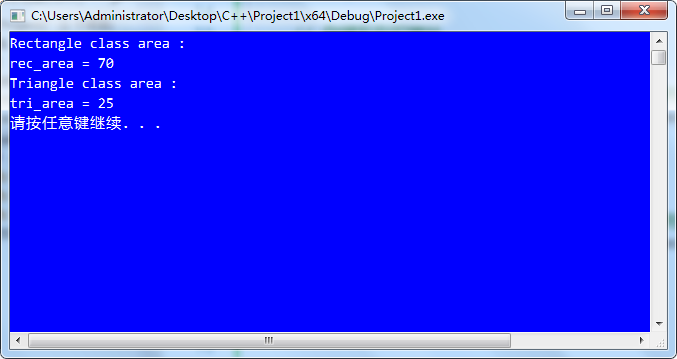多态
#include <iostream>
using namespace std;
// 基类 Shape
class Shape {
protected:
int width, height;
public:
// 构造方法
Shape(int a = 0, int b = 0)
{
width = a;
height = b;
}
/*这里如果不加virtual关键,就是静态多态,也就是"早绑定",
这样所有派生类在调用这个方法时执行的都是基类的这个方法,
而如果加上这个关键字,就是动态链接,或者叫"后期绑定",这样所有派生类在调用这个方法的时候,
就会执行各自的这个方法,虽然函数名相同,但是各自实现的功能是不同的,这就是"多态"!
*/
virtual int area()
{
cout << "Parent class area :" << endl;
return 0;
}
};
// 派生类 Rectangle
class Rectangle : public Shape {
public:
Rectangle(int a = 0, int b = 0) :Shape(a, b) { } // 表示调用父类的构造方法
int area()
{
cout << "Rectangle class area :" << endl;
return (width * height);
}
};
// 派生类 Triangle
class Triangle : public Shape {
public:
Triangle(int a = 0, int b = 0) :Shape(a, b) { } // 表示调用父类的构造方法
int area()
{
cout << "Triangle class area :" << endl;
return (width * height / 2);
}
};
// 程序的主函数
int main()
{
Shape *shape; // 对象指针
Rectangle rec(10, 7); // 调用构造
Triangle tri(10, 5);
// 存储矩形的地址
shape = &rec;
// 调用矩形的求面积函数 area
int rec_area = shape->area(); // 调用的是同样的方法,返回的却是各自的数据
cout << "rec_area = " << rec_area << endl;
// 存储三角形的地址
shape = &tri;
// 调用三角形的求面积函数 area
int tri_area = shape->area(); // 调用的是同样的方法,返回的却是各自的数据
cout << "tri_area = " << tri_area << endl;
system("pause");
return 0;
}
运行:







 浙公网安备 33010602011771号
浙公网安备 33010602011771号